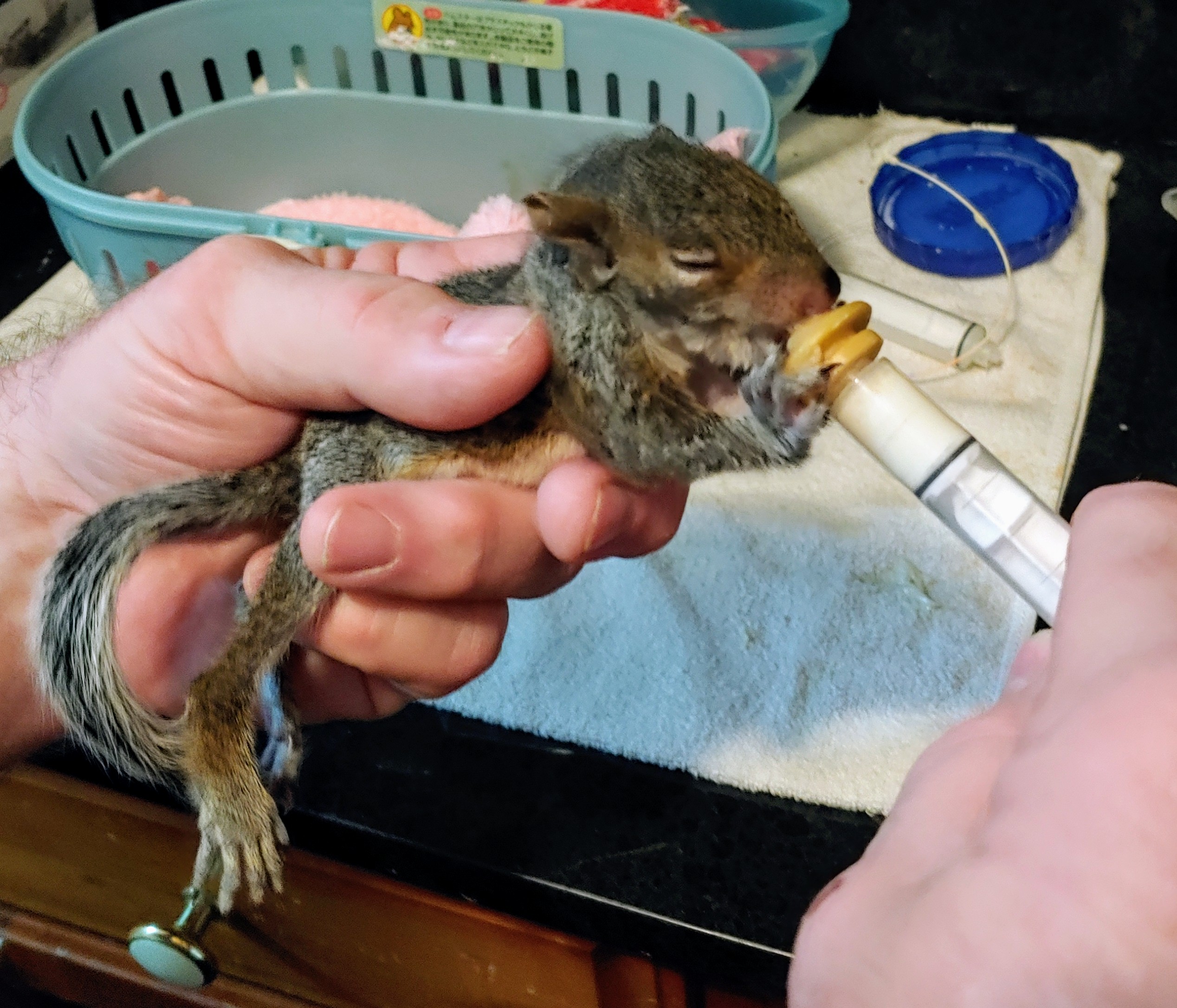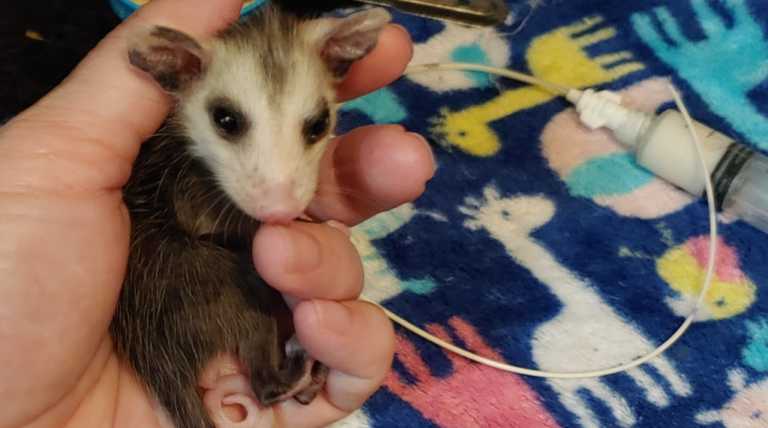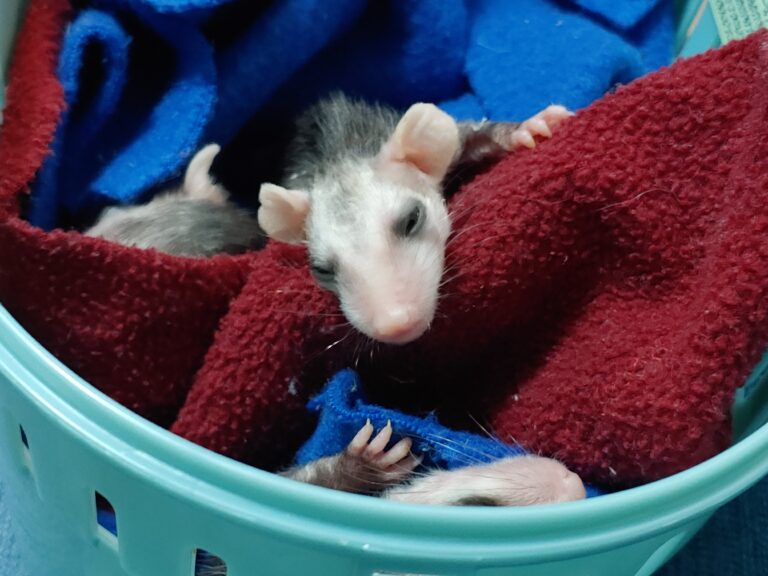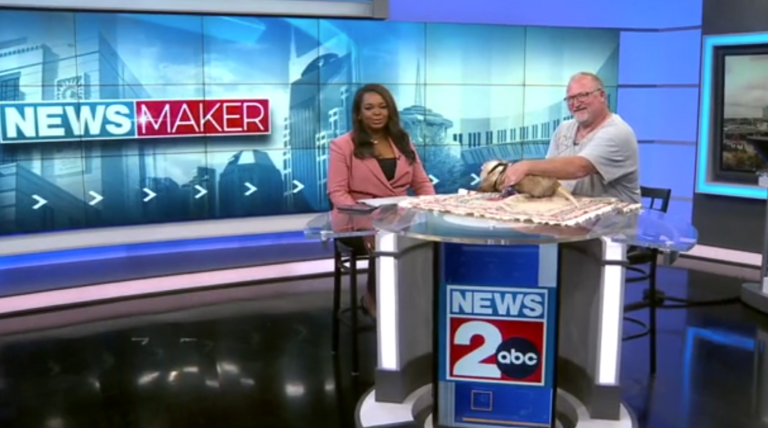Common Injuries to Squirrels and How We Help
Flying squirrels, like many small wildlife species, face a variety of dangers in the wild that can lead to injury. These injuries often require the specialized care of a wildlife rehabilitator. Below are some of the most common injuries that befall flying squirrels and how a wildlife rehabilitator can help:
1. Falls from Trees
Common Injuries:
- Broken or fractured bones (especially legs, ribs, or the skull)
- Head trauma
- Internal injuries
How a Rehabilitator Can Help:
- Stabilization: Immediate care includes stabilizing the squirrel to prevent further injury. Rehabilitators will assess the extent of the injuries and may need to immobilize fractured limbs.
- Pain Management: Administering pain relief is crucial to reduce suffering.
- Medical Care: If the injuries are severe, a rehabilitator might need to work with a veterinarian to set bones, treat head trauma, and manage internal injuries.
- Rehabilitation: After initial treatment, the squirrel will require a safe, quiet environment to recover. Rehabilitators often provide physical therapy to help restore mobility.
2. Predator Attacks
Common Injuries:
- Puncture wounds from bites or claws
- Lacerations
- Infections from bacteria introduced by the predator
How a Rehabilitator Can Help:
- Wound Care: Cleaning and treating wounds to prevent infection is a priority. Rehabilitators use antiseptics and may administer antibiotics if an infection is present.
- Tetanus Prevention: In cases where the squirrel has been bitten, rehabilitators might administer tetanus shots to prevent complications.
- Monitoring and Support: Close monitoring for signs of infection or shock is essential. The squirrel may need fluids, antibiotics, and a quiet space to recover from the trauma.
- Feeding and Hydration: Ensuring the squirrel stays hydrated and receives proper nutrition during recovery is crucial, especially if the squirrel is weak from the attack.
3. Electrocution
Common Injuries:
- Burns (especially on the feet and mouth)
- Neurological damage
- Cardiac arrest
How a Rehabilitator Can Help:
- Immediate Care: Treating burns is a priority. Rehabilitators will apply burn ointments and dressings to prevent infection and promote healing.
- Neurological Assessment: Rehabilitators will monitor for signs of neurological damage, such as seizures or uncoordinated movements, and provide supportive care.
- Cardiac Support: In cases of cardiac arrest or severe shock, a rehabilitator might need to perform emergency resuscitation or provide medications to stabilize the heart.
- Long-Term Care: Recovery from electrocution can be lengthy. The squirrel may need ongoing wound care, physical therapy, and supportive feeding until it can return to the wild.
4. Poisoning
Common Injuries:
- Neurological symptoms (tremors, seizures)
- Respiratory distress
- Internal bleeding (if poisoned with rodenticides)
How a Rehabilitator Can Help:
- Detoxification: Administering activated charcoal or other agents to bind and remove the toxin from the squirrel’s system.
- Supportive Care: Providing fluids, nutrients, and medications to support the squirrel’s organs as it detoxifies.
- Symptom Management: Treating symptoms like seizures with anticonvulsants, managing respiratory distress with oxygen therapy, and addressing internal bleeding with Vitamin K or other appropriate treatments.
- Long-Term Monitoring: Poisoned squirrels may need extended care to ensure they recover fully and do not suffer long-term effects.
5. Orphaned or Abandoned
Common Issues:
- Dehydration
- Malnutrition
- Hypothermia
How a Rehabilitator Can Help:
- Immediate Warmth: Providing a warm environment to stabilize the body temperature, as orphaned squirrels are often found cold and weak.
- Rehydration: Administering fluids orally or subcutaneously to rehydrate the squirrel.
- Feeding: Using species-specific formulas to ensure the squirrel gets the necessary nutrients to thrive. Tube-feeding may be required if the squirrel is too weak to eat on its own.
- Socialization and Development: Providing a safe space for the squirrel to grow and develop, with opportunities for climbing and gliding practice to prepare for eventual release.
6. Entanglement in Human-Made Objects
Common Injuries:
- Cuts and abrasions from wires, netting, or other materials
- Restricted blood flow, leading to tissue death or loss of limbs
How a Rehabilitator Can Help:
- Careful Removal: Carefully cutting away the entangling material to avoid further injury.
- Wound Care: Treating any cuts or abrasions and monitoring for signs of infection.
- Circulation Support: Assessing blood flow to the affected areas and providing treatment to restore circulation. In severe cases, amputation may be necessary.
- Physical Therapy: Helping the squirrel regain strength and mobility if it has suffered limb damage or loss.
Conclusion
Wildlife rehabilitators play a crucial role in the recovery and survival of injured flying squirrels. Their expertise in medical care, wound management, and rehabilitation techniques ensures that these remarkable animals have the best chance of returning to the wild. Whether dealing with a fall, a predator attack, or another common injury, a rehabilitator’s goal is always to heal and release the squirrel back into its natural habitat, healthy and ready to glide once more.




